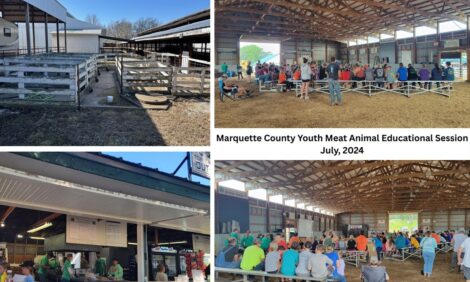



Subjects of Turkey Production Research
US - It comes as an honor, but as no surprise, that the tom turkey for the traditional Thanksgiving presentation of a live turkey to the US president will come from Willmar, Minnesota, this year, writes Sally Noll from the University of Minnesota Extension.Minnesota is No. 1 nationally in turkey production, with 47 million turkeys coming from Minnesota's farms. The turkey industry and related businesses provide 26,000 jobs in the state.
The Dean of University of Minnesota Extension, Bev Durgan, has said that Minnesota leads turkey production because it's producers are quick to apply new research-based ideas and technology to their operations. Forward-thinking entrepreneurs started the business here early on, so it now has a solid infrastructure of hatcheries, farms and processing plants.
Minnesota is also a major producer of crops used for turkey feed. Minnesota turkey farmers feed $75 million worth of corn and $100 million worth of soybeans to their turkeys each year.
Turkey feed is the major cost in the production of turkeys for market. Extension, through research at the Turkey Research Unit at UMore Park in Rosemount, provides information for poultry nutritionists, assisting in the development of feeding programmes.
Periodically, turkey producers are challenged by high cost of feed ingredients, especially in recent months. Earlier research established nutrient requirements and determined the interaction between feed ration and turkey house temperature, with an emphasis on optimizing feed programmes and controlling feeding costs.
While the price of all feed ingredients has increased, the increase in the cost of corn is having a big impact because corn is a major source of energy in the diet for turkeys. Energy content determines how efficiently feed is used; a lower-energy diet causes the birds to eat more in order to meet their energy need; higher energy lowers feed intake.
Less corn in the diet results in less diet energy because corn has the highest energy content of the grains. Poultry don't utilize fiber efficiently, so the number of ingredients that could be fed is limited. A lowered-energy diet with high fiber content will increase feed intake and perhaps slow gain, thus changing overall production cost.
What can be done when the desired level of corn can't be achieved? Ms Noll says she has been researching this problem with an emphasis on how best to replace some of the corn with distillers dried grains with solubles (DDGS), derived from corn during ethanol production, as well as determining how to improve energy-release from other feed sources.
Basic information, such as feeding levels and nutrition, has been determined. New research is examining characteristics of the fiber in DDGS to improve its digestibility.








